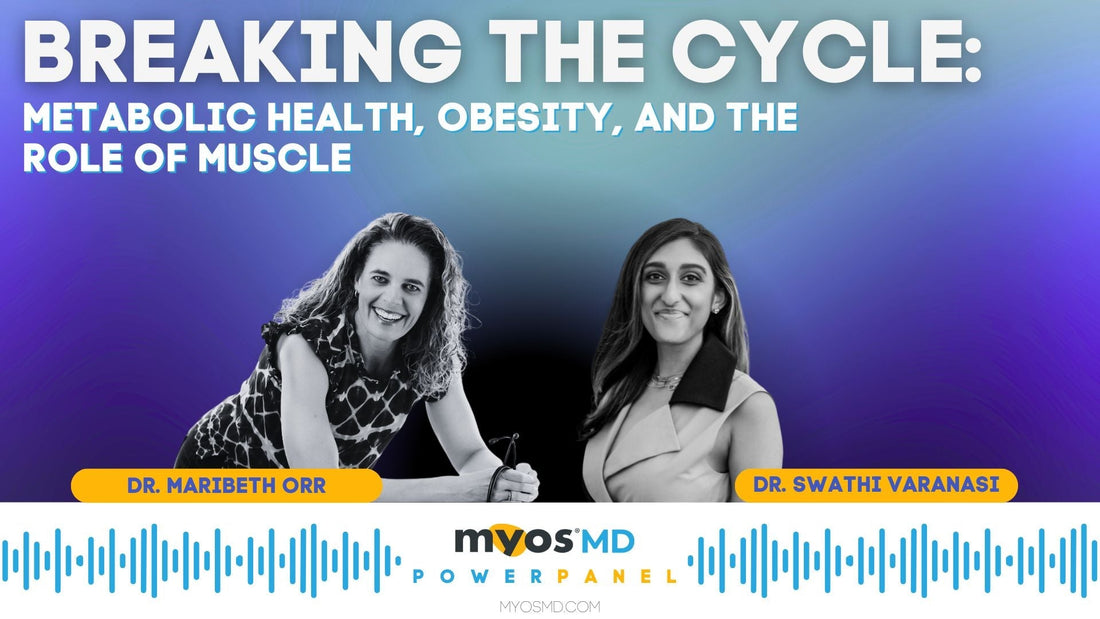Breaking the Cycle: How Muscle Health Disrupts Metabolic Dysfunction and Obesity
In the fight against metabolic disease, it’s time to shift the spotlight from fat loss alone to something often overlooked: muscle health.
In a recent Power Panel discussion, Dr. Maribeth Orr, DO—a board-certified obesity medicine physician—delved into the critical but often neglected role of skeletal muscle in obesity, metabolic health, and long-term weight management. Drawing on decades of experience in family and obesity medicine, Dr. Orr made one thing clear: “We can't just rely on medications… muscle is a key endocrine, immunologic organ—it has to be a key player.”
Obesity: A Visible Marker of Metabolic Dysfunction
“Obesity is not just a weight issue,” Dr. Orr emphasized. “It’s a metabolic disease—really a state of energy production and storage dysfunction.” At its core, this dysfunction traces back to the mitochondria—the energy producers of the body. Conditions like heart disease, PCOS, and even dementia stem from this same root cause: impaired energy regulation.
The unique—and often underestimated—aspect of obesity is that we can see it. “You can’t see type 2 diabetes or fatty liver disease, but you can see obesity. It gives us a physical cue that metabolic regulation is off,” Dr. Orr said.
Muscle: The Largest, Most Active Organ in the Body
When it comes to metabolic health, muscle is more than meets the eye. “Muscle is the biggest, most active endocrinologic organ that we have,” Dr. Orr explained. “Muscle contractions trigger a whole cascade of biochemical events that influence other systems of the body.”
These include myokines and exerkines—hormone-like substances that help regulate insulin sensitivity, inflammation, and even cognition. “We have to move away from thinking muscle is just for bodybuilders or athletes. We need to be asking our 60- and 70-year-olds: ‘What strength do you have?’”
Sarcopenic Obesity: The Hidden Double Threat
Dr. Orr also discussed sarcopenic obesity—a dangerous combination of excess fat mass and low lean muscle mass. “These two conditions feed off each other,” she said. “Excess fat mass causes inflammation and metabolic disruption, which further reduces muscle. And losing muscle worsens insulin resistance and slows metabolism.”
Breaking this cycle requires more than fat loss—it demands lean mass preservation and functional strength.
Strength Training and “Exercise Snacks” for Insulin Sensitivity
How do we interrupt the cycle of obesity and metabolic disease? Dr. Orr promotes a practical and empowering approach: build strength through consistency, not intensity.
“If we can’t make time for a 30-minute workout, can we find just one minute?” she asked. “I’ll knock out 15–20 bodyweight squats between patients… Four bouts like that throughout the day, and you’ve improved glucose regulation, boosted mood, and triggered beneficial myokines.”
She calls these “exercise snacks”—short, consistent bursts of activity that are more sustainable for patients managing fatigue, pain, or mobility limitations.
Nutrition Tip: Start with Real Food
On the dietary side, Dr. Orr offered two key words: real food.
“Food was meant to be food—not a collection of food-like substances,” she shared. Whether patients choose Mediterranean, vegan, or carnivore approaches, the foundation must be minimizing ultra-processed foods and prioritizing whole foods to restore energy balance and support lean muscle mass.
The Takeaway: To truly address obesity and prevent relapse, we must treat muscle as medicine. Healthcare providers and patients alike need to reframe strength as essential—not optional—in the pursuit of lasting metabolic health.
Learn more about how to protect muscle and improve outcomes at myosmd.com.

